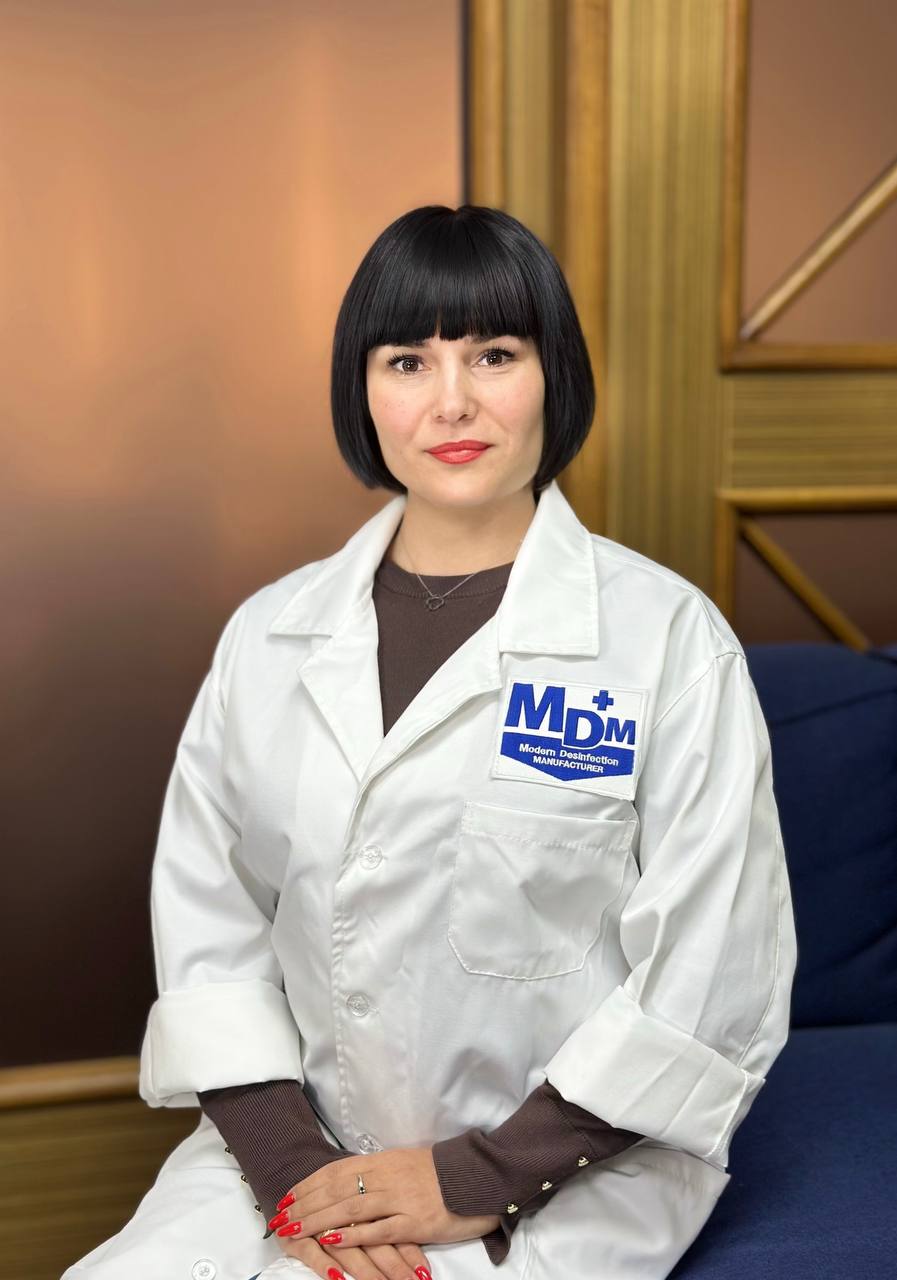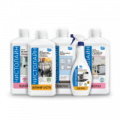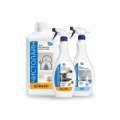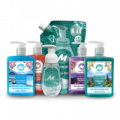How to get rid of plaque, limescale and rust on the toilet?
effective cleaning methods

Content
Even regular plumbing care does not eliminate the risk of plaque or rust in the toilet bowl. And if washing is postponed all the time due to constant busyness or carelessness, then the picture can become quite unsightly. But in fact, with the proper desire, it is quite possible to return your toilet to its original whiteness. But how to clean the toilet? Let's try to answer this question in detail.
Why does plaque appear in the toilet bowl?
The main reason for the appearance of an ugly plaque in the toilet bowl is excessive hardness of tap water (a significant amount of mineral salts in its composition). These mineral salts settle on surfaces – at first as a thin film, and then as an increasingly noticeable layer. Rust from old water pipes, urinary calculus, food residues, etc. also contribute to the formation of plaque.
Of course, it is best to periodically subject the toilet to a high-quality cleaning to reduce the risk of limescale. After all, if it has already appeared, its thickness will gradually increase, and it is not easy to cope with a thick layer of such formations.
Rules for cleaning the toilet bowl: prevention of plaque
To avoid plaque in the toilet bowl, it is recommended to carry out preventive cleaning every 1-3 days. To do this, you need to:
- drain the water in the toilet bowl;
- аpply the chosen cleaner directly under the rim (or, in the case of a rimless design, along the entire inner perimeter of the toilet);
- leave the product on the surface of the toilet bowl for 10-20 minutes;
- rub the toilet bowl inside a little with a brush;
- drain the water.
Cleaning the toilet should become part of the daily routine and become a habit, only in this way it will always remain clean.
How to properly clean the toilet from plaque?
In order to eliminate the plaque that has already formed (even if we are talking about a thin layer of it), it is necessary to carry out more thorough work. In no case should you try to pick off the layers with hard and sharp objects. This way you can only damage the toilet bowl - you will not achieve cleanliness this way.
To remove heavy plaque, it is recommended:
- turn off the water so that the toilet tank does not collect;
- drain the water that is already in the tank;
- push as much water as possible with a plunger so that it is not in the toilet bowl;
- apply a thick layer of detergent to all surfaces inside the toilet bowl and leave for 30-60 minutes;
- treat the toilet bowl with a brush, removing softened plaque;
- unscrew the valve so that water collects in the tank, and drain it several times.
After such a radical cleaning, it is necessary to regularly maintain the cleanliness of the toilet bowl as described above.
How to clean plaque: will folk remedies help?
There are many folk remedies that are recommended to be used to clean the toilet bowl from plaque. Among them:
- Soda with vinegar. Drain the water in the toilet bowl, pour a pack of baking soda on its surfaces and rub a little with a brush. After half an hour, pour vinegar over the soda and, while the reaction is taking place, rub the contaminated places well.
- Salt with vinegar. Heat a cup of vinegar to 38-39 ° C, dissolve a teaspoon of salt in it. Apply this product to the walls of the toilet bowl, rub it well into problem areas, using a brush. Leave the mixture for 12 hours, then rinse with water.
- Mustard powder. Mix 2 tbsp. l. of this product with the same amount of citric acid and 4 tbsp. l. starch. Dilute with water to the consistency of a thick gruel. Apply the resulting mixture to the walls of the toilet bowl for half an hour, then rub well and rinse with water.
- Coca-Cola. To eliminate plaque in the toilet, many advise just pour a liter or two of Coca-Cola into it and leave it for a couple of hours.
The effectiveness of folk remedies, unfortunately, is questionable. Instead of wasting time and effort looking for an effective recipe, it is better to immediately use high-quality household chemicals.
How to choose a toilet bowl cleaner?
Manufacturers of household chemicals offer a wide range of household chemicals for the toilet bowl. But do not chase after advertised products. It is better to give preference to the products of those brands that offer really high-quality certified products. They are guaranteed to help you achieve an excellent result.
To cope with even a very strong plaque, the following will help:
- Pure WC. Copes with rust, plaque and urinary calculus. Gives a pleasant aroma. Acts quickly and is easily washed off. Does not require scooping water out of the toilet bowl - if there is a stone under a layer of water, it must be poured into water and left for half an hour to forty minutes.
- Pure anti-scale. Perfectly removes petrified scale, limescale and rust. Gently cleans various types of surfaces.
High-quality household chemicals are easy to use and safe for humans. Of course, when working with it, you should protect your hands with gloves and avoid contact with the skin, mucous membranes and respiratory tract.
Expert comment from MDM Group:

All company products undergo quality control and comply with current safety standards. We apply a multilevel testing system at every stage of production, including raw material assessment, finished formulas, and product stability. MDM Group continuously improves formulations and production technologies to ensure consistent performance both for household and professional use. We pay special attention to efficiency and safe application on different surfaces, in accordance with Ukrainian and international standards.
Yana Holovenko, Head of Quality Department, MDM Group






